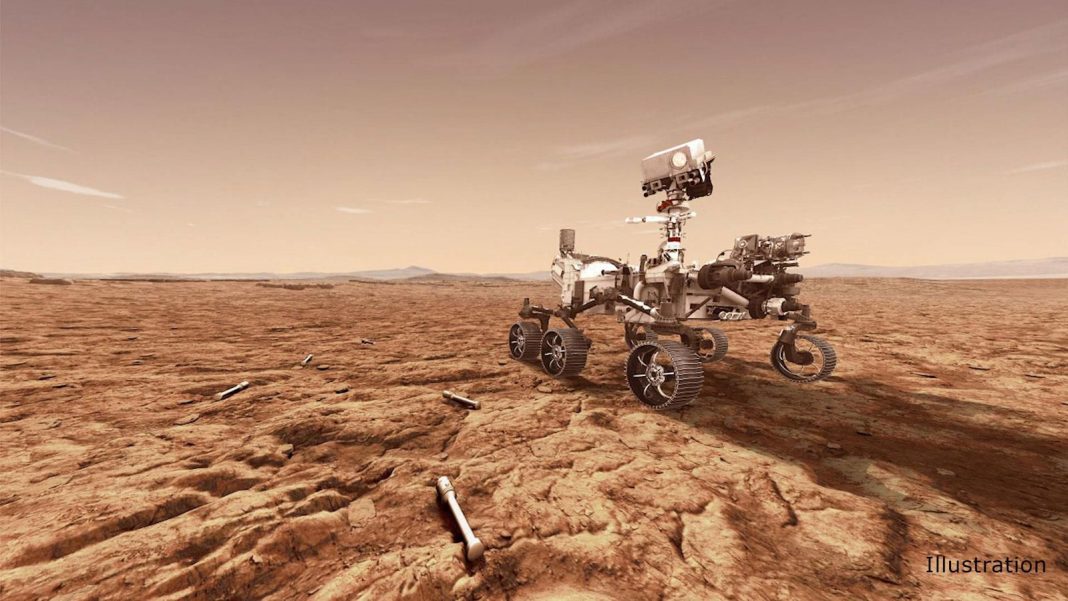
Artist’s concept of the NASA Perseverance rover, nearby caches of promising rock samples that it set … [+]
NASA
NASA’s Perseverance rover is flying to Mars as you read this sentence. It will land there in February 2021 and set aside rocks with promising signs of ancient life, for a future mission to pick up for analysis.
But what about current life on Mars? Are microbes embedded in the ice caps? Perhaps they are sheltering in water runoff in some crater? Or, as some scientists suggest, is life buried miles underground — a difficult spot for us to search, at best?
A new study is trying to figure out ways to hunt for life on worlds that have little or no running water at the surface. One easy answer, in theory, is to look to water reserves underground — and we are pretty sure Mars has those.
“We examined whether conditions amenable to life could exist deep underneath the surface of rocky objects like the moon or Mars at some point in their histories, and how scientists might go about searching for traces of past subsurface life on these objects,” said lead author Manasvi Lingam, an assistant professor of astrobiology at the Florida Institute of Technology.
“We know that these searches will be technically challenging, but not impossible,” added Lingam, who is also an astronomer at Harvard University’s Center for Astrophysics.

Astronauts and personnel participating in a European Space Agency cave mission examine an … [+]
ESA
In some cases, it might be relatively easy to find water (and life) relatively close to the surface of Mars. Examples could include drilling near the equator, or looking for geological “hotspots” that have higher temperatures, Lingam said. But in other cases, digging will be a considerable challenge, using machine technology that isn’t invented yet.
“We need to be able to drill tens of kilometers [or miles] under the surface of Mars, and without geological activity exposing these deep layers, we will not be able to explore them,” said Avi Loeb, a study co-author as well as science professor at the Center for Astronomy, in the same statement.
While deep drilling isn’t something we are prepared to do right now, humans and robots may be practicing shallower drilling in the near future. NASA’s InSight mission ran into difficulties using its drill, but the lessons learned could be implemented on the moon, where NASA hopes to place astronauts by 2024.
“One can imagine robots and heavy machinery that will drill deep under the lunar surface in search of life, just as we do in searching for oil on Earth,” said Loeb. And once we feel comfortable on the moon or Mars, he added, we could extend the principles of drilling to other bodies in the solar system, like asteroids.
Traditionally, astronomers have defined the “habitable zone” of a star by looking at rocky planets in the vicinity of a star that could have liquid water consistently flowing at the planet surface. Loeb suggested that digging underground could extend the definition of habitability.
“Our study extends to all objects out there and indeed implies that the habitable zone [of the solar system] is much larger than traditionally thought, since science currently considers only life on the surface of the object,” Loeb said.
A study based on the research was published in Astrophysical Journal Letters.









